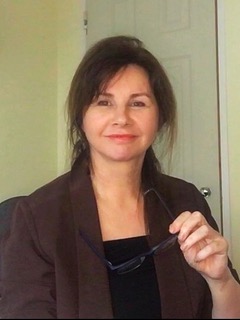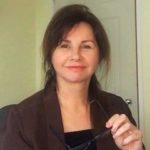Better communications with symptomatic hypermobility patients leads to better outcomes
 By Jane Green – advocate ex Assist. Headteacher, BSc (HONS) Psych., PGCE QTS, Adv.Dip.Ed.(CD), MA Ed. (Leadership and Management), Social Care Institute for Excellence Trustee and on the co-production steering board for four years
By Jane Green – advocate ex Assist. Headteacher, BSc (HONS) Psych., PGCE QTS, Adv.Dip.Ed.(CD), MA Ed. (Leadership and Management), Social Care Institute for Excellence Trustee and on the co-production steering board for four years
For anyone on the long journey to diagnosis of Ehlers-Danlos syndromes (EDS) (previously Joint Hypermobility syndrome (JHS)) or the closely related Hypermobility Spectrum Disorders (HSD), the knowledge, practice and understanding of appropriate musculoskeletal issues from practitioners is hugely beneficial.
EDS and HSD are complex heritable disorders which affect the connective tissue found throughout the body. It can present differently in each patient, ranging from asymptomatic to severe disability. There are criteria for diagnosis, but is essential practitioners understand that the flexibility and flare of symptoms that can ‘appear out of the blue’. When patients have no explanation it can lead to confusion and anxiety. While practitioners hopefully are aware of EDS/HSD, the key area for us has been belief that what we’re experiencing is real. My journey with MSK Sussex has been the same.
I think I have always been in pain but thought everyone felt the same as I did. Even though all were surprised when I used to dislocate joints, I felt my concerns were dismissed and I was made to feel that I was making a fuss. I thought my other non-musculoskeletal issues associated with hypermobility syndromes were also ‘normal’ so pain of various sorts, gastrointestinal, sugar rushes, dizziness, headaches and skin issues were my ‘normal’.
My musculoskeletal issues were sprains, dislocations, subluxations, dislocation of tendons, metatarsalgia, plantar fasciitis, crepitus, patellofemoral pain, PTF pain, tendonitis, trochanter bursitis , ITBS, ruptured tendons, herniated discs, sacro-iliac pain but also muscle spasms, femoral acetabular impingement, rigidity, arthritis, spondylitis and tibial plateau injuries. It doesn’t get better with age! When I was younger I loved sports and dancing but it wasn’t until pregnancy that I started really deteriorating. After having my children my issues increased.
As a professional national educationalist, speaker and Assistant Headteacher, I was passionate about my career but it took all my energy; after each working day I would be in so much pain and fatigue. I also looked after my children with special needs. I was once asked what hobbies I had to take my mind off pain and I remember saying “rest”. As I had no preceding trauma before these injuries I was often not believed and told that they were psychosomatic.
 I took early ill-health retirement in 2015 and only then received my diagnoses of EDS3 now hypermobility EDS, (hEDS) and autism. Unfortunately I was very ill with hEDs issues and persistent and acute pain. I volunteered for Ehlers-Danlos.org and was asked to speak at the ARMA Pain conference in 2017. All I remember was that my left ‘good knee’ would not stay in place, even when sitting down and I would have to constantly stop talking and click it back in with huge clunk although it did add ‘weight’ to my talk I suppose!
I took early ill-health retirement in 2015 and only then received my diagnoses of EDS3 now hypermobility EDS, (hEDS) and autism. Unfortunately I was very ill with hEDs issues and persistent and acute pain. I volunteered for Ehlers-Danlos.org and was asked to speak at the ARMA Pain conference in 2017. All I remember was that my left ‘good knee’ would not stay in place, even when sitting down and I would have to constantly stop talking and click it back in with huge clunk although it did add ‘weight’ to my talk I suppose!
My right leg became so painful year after year that I dreamt of cutting it off. I had so many issues that an enthusiastic primary practitioner said I would be the first person in the practice to have replacement knees, hips and shoulders plus fused ankles, her first nearly bionic patient! A cheerful surgeon also offered to break my right leg in three. I obviously didn’t particularly want this especially as a full-time carer and so we continued trying to refer to the MSK department. It was very unclear how to see a rheumatologist. At one point this process broke down and I felt ignored. In the end I issued a formal complaint. Now you might think this is not good; in fact, it is, as I was treated fairly. Complaints can allow for learning from mistakes in good practice.
 It’s also important for patients to at least feel engaged particularly in such a very neglected area of EDS/HSD for those with or without a diagnosis as there is no defined care pathway for hEDS HSD. This is especially important because of the potential differential diagnoses such as fibromyalgia, arthritis and CFS/ME. Improved communication and systems process can lead to better patient outcomes and less potential for PTSD to develop.
It’s also important for patients to at least feel engaged particularly in such a very neglected area of EDS/HSD for those with or without a diagnosis as there is no defined care pathway for hEDS HSD. This is especially important because of the potential differential diagnoses such as fibromyalgia, arthritis and CFS/ME. Improved communication and systems process can lead to better patient outcomes and less potential for PTSD to develop.
 In 2018, I founded a local hypermobility support group, SussexEDS to improve communication and provide local active support for members with symptomatic hypermobility and family members. This involved advocating with health linking guidance to local and national EDS and Hypermobility charities and the RCGP EDS Toolkit on the MSK Sussex website. We are also planning exciting webinars with the lead of the MSK service talking and taking questions from joint members. This in turn builds not only awareness of what MSK does but also builds trust. This is a rung on the ladder of co-production where informing to engagement sits and we are very hopeful to build on this for the future in the most effective way.
In 2018, I founded a local hypermobility support group, SussexEDS to improve communication and provide local active support for members with symptomatic hypermobility and family members. This involved advocating with health linking guidance to local and national EDS and Hypermobility charities and the RCGP EDS Toolkit on the MSK Sussex website. We are also planning exciting webinars with the lead of the MSK service talking and taking questions from joint members. This in turn builds not only awareness of what MSK does but also builds trust. This is a rung on the ladder of co-production where informing to engagement sits and we are very hopeful to build on this for the future in the most effective way.

